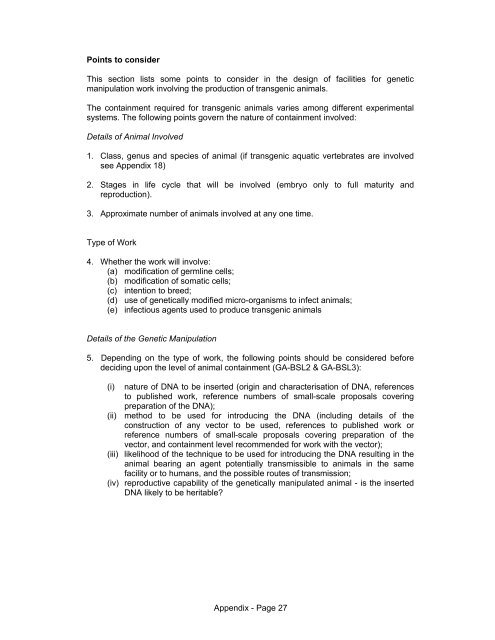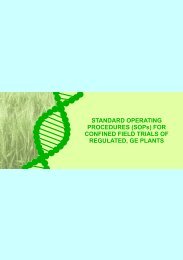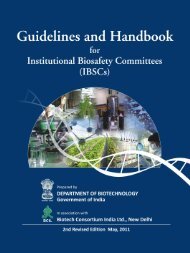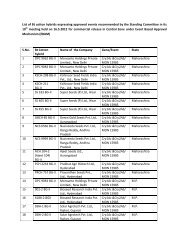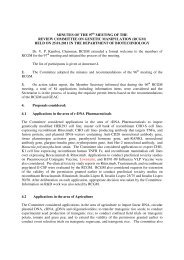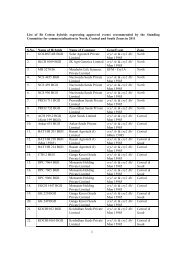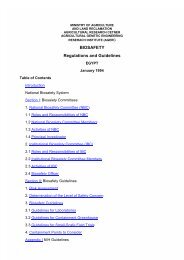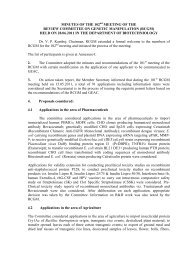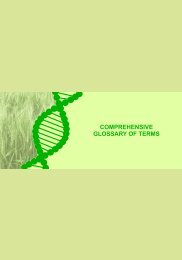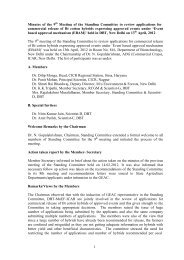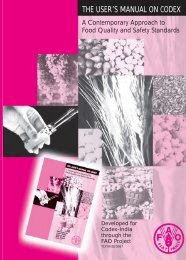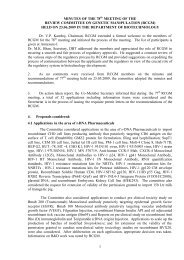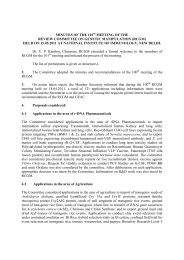Biosafety Guidelines For Research On Genetically Modified ...
Biosafety Guidelines For Research On Genetically Modified ...
Biosafety Guidelines For Research On Genetically Modified ...
Create successful ePaper yourself
Turn your PDF publications into a flip-book with our unique Google optimized e-Paper software.
Points to consider<br />
This section lists some points to consider in the design of facilities for genetic<br />
manipulation work involving the production of transgenic animals.<br />
The containment required for transgenic animals varies among different experimental<br />
systems. The following points govern the nature of containment involved:<br />
Details of Animal Involved<br />
1. Class, genus and species of animal (if transgenic aquatic vertebrates are involved<br />
see Appendix 18)<br />
2. Stages in life cycle that will be involved (embryo only to full maturity and<br />
reproduction).<br />
3. Approximate number of animals involved at any one time.<br />
Type of Work<br />
4. Whether the work will involve:<br />
(a) modification of germline cells;<br />
(b) modification of somatic cells;<br />
(c) intention to breed;<br />
(d) use of genetically modified micro-organisms to infect animals;<br />
(e) infectious agents used to produce transgenic animals<br />
Details of the Genetic Manipulation<br />
5. Depending on the type of work, the following points should be considered before<br />
deciding upon the level of animal containment (GA-BSL2 & GA-BSL3):<br />
(i) nature of DNA to be inserted (origin and characterisation of DNA, references<br />
to published work, reference numbers of small-scale proposals covering<br />
preparation of the DNA);<br />
(ii) method to be used for introducing the DNA (including details of the<br />
construction of any vector to be used, references to published work or<br />
reference numbers of small-scale proposals covering preparation of the<br />
vector, and containment level recommended for work with the vector);<br />
(iii) likelihood of the technique to be used for introducing the DNA resulting in the<br />
animal bearing an agent potentially transmissible to animals in the same<br />
facility or to humans, and the possible routes of transmission;<br />
(iv) reproductive capability of the genetically manipulated animal - is the inserted<br />
DNA likely to be heritable<br />
Appendix - Page 27


